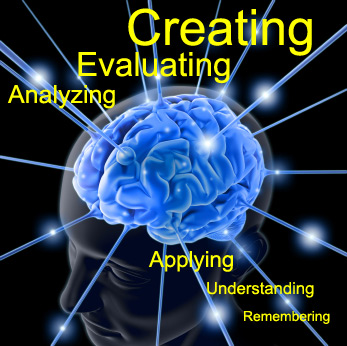Metacognition

What do you teach?
When asked this question, some teachers respond: I teach math; I teach music; I teach reading; I teach gym, etc. Teachers don't teach subjects. Teachers teach students about these subjects. And great teachers teach something much more— they teach students to learn how to think.
Metacognition is an instructional principle that informs students about the thought process and how to learn new information. Through a think-aloud, you provide students with an example on how they should think about their thinking.
Some examples include:
- “Remember what we learned last week, and put that answer in your brain.”
- “I'm making a mental map so that I understand how these fit together.”
- "I'm thinking of different ways to apply this information."
- "Now I need to analyze this data more closely."
- "I'm thinking that I need to evaluate these two concepts to see which one is more appropriate."
- "What are some ways that I can use this to create something new?"
Notice that these examples are utilizing Bloom's Taxonomy to direct the students to the appropriate thought level for the lesson. When teachers explain what they are thinking, students pick up on and internalize this language. Once students are familiar with the vocabulary they can adjust their thinking to the approximate level.
Teaching a subject often lends itself to instruction that focuses on students memorizing facts, developing understanding, and providing opportunities for students to apply what they have learned. To create lifelong learners, students need to learn higher-order thinking skills. By illustrating to students how to think about analyzing, evaluating, and using information creatively, you provide them with the internal vocabulary they will need to be successful in school and in their careers.
